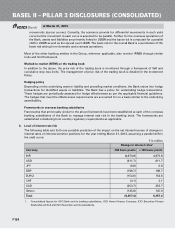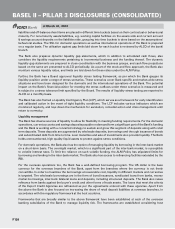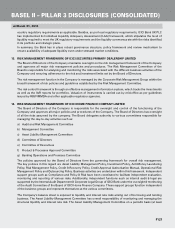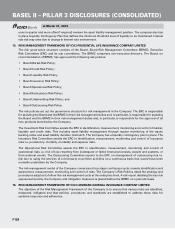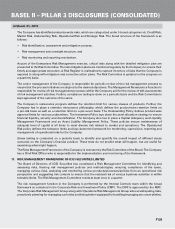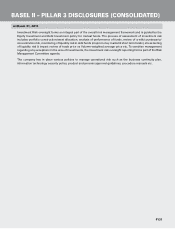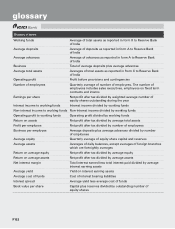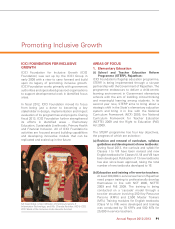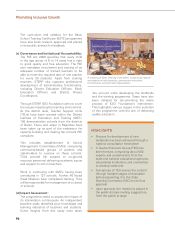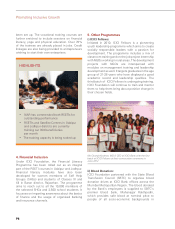ICICI Bank 2013 Annual Report Download - page 207
Download and view the complete annual report
Please find page 207 of the 2013 ICICI Bank annual report below. You can navigate through the pages in the report by either clicking on the pages listed below, or by using the keyword search tool below to find specific information within the annual report.
F129
The Company has identified enterprise wide risks, which are categorized under 5 broad categories viz. Credit Risk,
Market Risk, Underwriting Risk, Operational Risk and Strategic Risk. The broad structure of the framework is as
follows:
• Riskidentification,assessmentandmitigationprocess;
• Riskmanagementandoversightstructure;and
• Riskmonitoringandreportingmechanism.
As part of the Enterprises Risk Management exercise, critical risks along with the detailed mitigation plan are
presented to the Risk Committee. The risk mitigation plans are monitored regularly by the Company to ensure their
timely and appropriate execution. A Risk Register is maintained to capture inventory of risks that the Company is
exposed to along with mitigation and corrective action plans. The Risk Committee is updated on the progress on
a quarterly basis.
The senior management of the Company is responsible for periodic review of the risk management process to
ensure that the process initiatives are aligned to the desired objectives. The Management Reassurance Function is
responsible for review of risk management processes within the Company and for the review of self-assessments
of risk management activities. Further, compliance testing is done on a periodic basis and the Risk Committee is
kept appraised of the outcome of the same.
The Company’s reinsurance program defines the retention limit for various classes of products. Further, the
Company has in place a retention reinsurance philosophy, which defines the product-wise retention limits on
a per-risk basis as well as a retention limit on a per-event basis. The Underwriting Policy defines product-wise
approval limits for various underwriters. The Investment Policy lays down the asset allocation strategy to ensure
financial liquidity, security and diversification. The Company also has in place a Capital Adequacy and Liquidity
Management Framework and an Asset Liability Management Policy. These policies ensure maintenance of
adequate level of capital at all times to meet diverse risk related to market and operations. The Operational
Risk policy defines the tolerance limits and lays down the framework for monitoring, supervision, reporting and
management of operational risks for the Company.
Stress testing is conducted on a periodic basis to identify and quantify the overall impact of different stress
scenarios on the Company’s financial position. These tests do not predict what will happen, but are useful for
examining what might happen.
The Risks Management Framework of the Company is overseen by the Risk Committee of the Board. The Company
has a Chief Risk Officer who is responsible for the implementation and monitoring of the framework.
17. RISK MANAGEMENT FRAMEWORK OF ICICI SECURITIES LIMITED
The Board of Directors of ICICI Securities has constituted a Risk Management Committee for identifying and
assessing risks, framing risk management policies and methodologies, ensuring compliance of the same,
managing various risks, analysing and monitoring various products/processes/policies from an operational risk
perspective and suggesting risk controls to ensure that the residual risk of various business activities is within
tolerable limits. The Risk Management Committee meets at least once in a quarter.
The risk management function in the Company is performed by the Internal Controls team within the broad
framework as contained in the Corporate Risk and Investment Policy (CRIP). The CRIP is approved by the RMC.
The Corporate Risk Management Group along with Operations Risk Management Group aims at anticipating risks,
proactively planning for managing such risks and being better equipped for handling/managing any uncertainties.
BASEL II – PILLAR 3 DISCLOSURES (CONSOLIDATED)
at March 31, 2013







